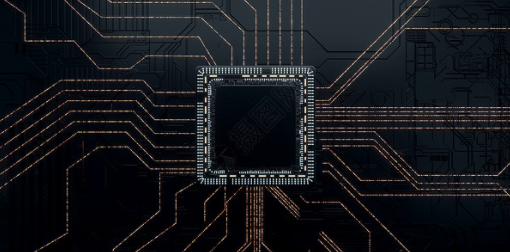1. PCB board can provide mechanical support and electrical connection for electronic components
Now we know that PCB can provide mechanical support and electrical connection for electronic components. How to install these electronic components on PCB?
How can components be mounted on the PCB? In fact, there are many types of packaging for electronic components, and the mounting methods for components of different packaging forms on the PCB are also different. Traditional electronic components are mostly pin-shaped and bulky. For this component, it is necessary to drill holes on the PCB before installation. The component pins are soldered from the holes through the pads on the other side of the PCB, and the excess pins are cut off when the soldering is completed. But today's computer boards use more low-cost, small-size SMD surface mount components, so there is no need to drill holes on the PCB. As long as they are pasted to the design position, the components can be soldered on the pads. In addition to being able to be soldered directly to the PCB, components can also be installed through sockets.

For example, most well-known BIOS chips are installed on motherboards with sockets. The concepts of component surface and welding surface are often mentioned in some data. The so-called component surface is the surface of the electronic component. The soldering surface is a component of the pin, which is connected to the surface through solder and the PCB on the pad. It is used for our soldering. For lead-type components, the solder joints and components are located on the two surfaces of the PCB, and the components can only be on the surface of the component, otherwise soldering will bring great trouble. For SMD components, the solder joints and components are located on one surface, so the components can be located on either side of the PCB, or even on both sides.
2. PCB differential signal design
Differential wiring Differential signals (differential signals) are more and more widely used in high-speed circuit design. The most critical signals in circuits are often designed with differential structures. What else is so popular? How to ensure its good performance in PCB design?
With these two questions, let us discuss the next part. What is a differential signal? In layman's terms, the driving end sends two equivalent inverted signals, and the receiving end determines the logic state "0" or "1" by comparing the difference between the two voltages.
And the pair of wiring that carries the differential signal is called the differential line.
Compared with ordinary single-ended signal wiring, the most obvious advantages of differential signals are reflected in the following three aspects:
A. Strong anti-interference ability, because the coupling between the two differential lines is very good. When there is noise interference from the outside, they are coupled to the two lines almost at the same time, and the receiving end only pays attention to the difference between the two signals, so the external common Mode noise can be completely canceled.
B. It can effectively suppress EMI. For the same reason, due to the polarity of the two signals, their external radiated electromagnetic fields can cancel each other. The closer the coupling, the less electromagnetic energy released to the outside world. C. Precise timing positioning, because the switching change of the differential signal is located at the intersection of the two signals, instead of the ordinary single-ended signal, which depends on the high and low threshold voltages to determine, so through this process, the temperature effect is small, and the timing can be reduced. Errors are also more suitable for low-amplitude signal circuits.
The current popular LVDS (Low Voltage Differential Signaling) refers to this small amplitude differential signal technology. For PCB engineers, the most important question is how to ensure that these advantages of differential wiring are fully utilized in actual wiring. Perhaps anyone who is connected with the layout will understand the general requirements of differential wiring, that is, "equal length and equal distance". The equal length is to ensure that the two differential signals always maintain opposite polarities and reduce the common mode component, while the isometric drawing is mainly to ensure that the differential impedances of the two are consistent and to reduce reflections. "As close as possible" is sometimes one of the requirements of differential wiring. But these rules are not rigid, and many engineers do not seem to understand the nature of high-speed differential signal transmission. The following focuses on several common misunderstandings in PCB differential signal design.